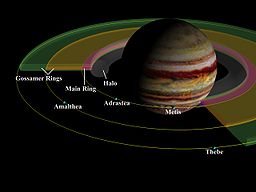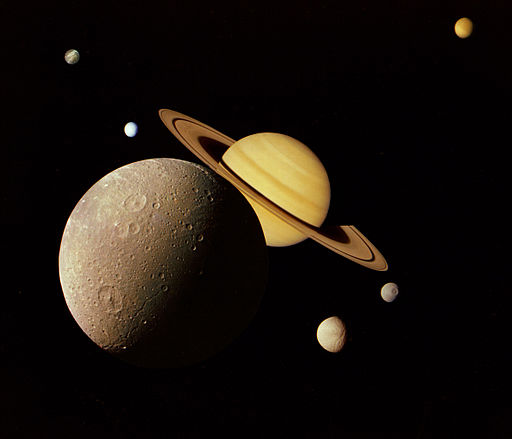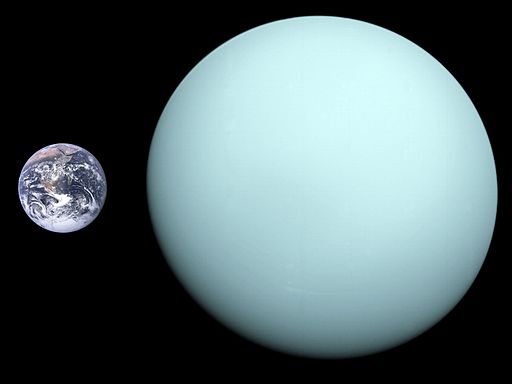Solar System
Mars
Mars is the fourth planet from sun. Mars is smaller than the Earth and Venus. Mars is the second smallest planet after Mercury in our solar system. Mars appears to be red because of iron oxide present in its surface. Because of colour of its surface Mars is often called as Red Planet. Mars has two satellites, i.e. moons, the names of these two satellites of Mars are Phobos and Deimos. Recently India has sent its satellite named Mangalyaan to the Mars on 5th November 2013.
Mars got its name after Roman God of War.

Mars: Some Important Facts
Size: Mars is 1/2 the size of earth
Years: 687 days on earth is equal to 1 year on Mars
Days: 24.617 earth hours is equal to 1 day on Mars
Moon: Mars has two moons, i.e. satellite named Phobos and Deimos.
Temperature: The average temperature on mars is equal to – 63 degree celcius.
Distance: 228 million km from sun.
Gravity: Gravity on Mars is about 38% of that of the earth gravity.
Canyon: Valles Marineris or Mariner Valley is a vast canyon system on the Mars. This Mariner Valley is 4000 km long and 7 kilometer in depth. The Mariner Valley or Valles Marineris is larger than Grand Canyon.
Mission Mars: Mariner 4 space craft sent by NASA makes the first successful flyby of the Mars. Before these six unsuccessful attempts was made by US and Soviet Union. Recently India has sent its satellite named Mangalyaan to the Mars on 5th November 2013.
Jupiter
It is the fifth planet in order to distance from the sun. It is the largest the planet in our solar system. Jupiter is a gas giant. Jupiter is primarily composed of gases and liquids. Atmosphere of Jupiter is mainly composed of hydrogen and helium gas. The diameter of Jupiter is 142,984 km. Jupiter is very large compare to earth. The volume of Jupiter is about 1321 times that of earth. Jupiter is 1/10 times that of the sun, i.e. sun is only ten times bigger than Jupiter. Jupiter is third brightest object after Moon and Venus in night sky. Jupiter has 67 moons and three outer rings.

Jupiter got its name after Roman God Jupiter.
Jupiter: Some Important Facts
Rings: Jupiter has three planetary rings. Its faint outer rings are called Gossamer Ring and thick inner ring is called The Halo.

Moon: Jupiter has 67 moons. Out of these moons, four larger moons are called Galilean moons because these four are discovered by Galileo Galilei in 1610. Name of these moons are Lo, Europa, Ganymede and Callisto. Ganymede is largest among these moons.
Distance: Jupiter is 778 km from sun.
Surface: Jupiter do not have solid surface.
Revolution: Jupiter completes its revolution around the sun in every 11.86 earth year.
Saturn
Saturn is the sixth planet as per distance from sun and second largest planet of our solar system. Saturn is the second largest gas giant after Jupiter. Saturn is about nine times bigger than earth. Saturn is known for its beautiful planetary rings. Saturn has total twelve rings among which nine are main continuous full rings. Rings of Saturn are made of dust, ice and rocky particles.

Saturn has 62 moons. Titan is the largest moon of Saturn and it is larger than planet Mercury. Titan is the only moon in our solar system which has an atmosphere. The name of second largest moon of Saturn is Rhea.
Saturn takes 10759 earth days to complete one revolution round the sun which is equal to 29.5 earth years.

Saturn: Important Facts
Size: Saturn is about nine times bigger than earth.
Rings: Saturn has total 12 beautiful rings. Nine rings are full rings.
Moon: Saturn has 62 moons, i.e. natural satellites. Titan is the largest and Rhea is the second largest moon of Saturn.
Days: One day on Saturn is equal to 10.7 hours on earth. This means Saturn completes one rotation on its axis in 10.7 earth hours.
Year: 29.5 earth years is equal to one year on Saturn. This means Saturn complete one revolution round the sun in 29.5 earth years.
Distance: Saturn is about 1.4 billion km from sun.
Surface: Saturn is a gas giant and do not have solid surface.
Uranus
Uranus is the seventh planet as per distance from the sun in our solar system. Uranus is the third largest planet in the solar system. Diameter of Uranus is 51800 km. Uranus is also an ice giant along with Neptune. Uranus is the coldest planet in our solar system. The minimum temperature of Uranus is — 242 degree celcius.

Uranus tilts at its axis more than 90 degree. Uranus completes its rotation on axis in 17 hours 14 minute and 24 second. Uranus is about 16 times bigger than earth in terms of surface area. Uranus takes about 63 times more space than earth in space. Uranus takes about 84 years to complete one revolution round the sun. This means 84 years on earth is equal to one year on Uranus. Uranus is situated at a distance of about 3 billion km from sun. This distance is about 20 times more than distance of earth from sun.
Uranus has 13 planetary rings and 27 known moons, i.e. natural satellites. Name of five main moons of Uranus are Miranda, Ariel, Umbriel, Titania and Oberon, among which Titania is the largest moon of Uranus.
Uranus was discovered by Sir William Herschel in 1781 using a self made telescope. Uranus was the first planet discovered by a telescope.
Uranus got its name after Greek deity. It is the only planet which name got from a figure of Greek mythology.
Uranus: Some Important Facts
Tilt at axis: Uranus is the only planet which tilts at its axis nearly at right angle. Because of this Uranus has a 20 years long season.
Rings: Uranus has 13 rings.
Temperature: Uranus is the coldest planet with an average temperature of — 212 degree celcius.
Days: 17 earth hours is equal to one day on Uranus.
Year: 84 years on earth is equal to one year on Uranus.
Moons: Uranus has 27 moons. Titania is the largest among them.
Distance: Uranus is about 3 billion km from sun.
Mission Uranus: Voyager 2 is the only one mission so far visited to Uranus. And Voyager 2 is the only one mission spacecraft that visited to four outer planets.
Neptune
Neptune is the eighth planet from the sun in the solar system. Neptune is another ice giant after Uranus. Neptune is 17 times heavier than that of earth. Neptune completes one revolution round the sun in about 164.8 earth year. Neptune rotates on its axis in about 16 hour. Neptune cannot be seen by naked eye in sky.
Neptune got its name after Roman God of Sea.

Neptune: Some Important Facts
Discovery: Neptune was discovered in 1846.
Rings: Neptune has 6 rings.
Magnetic Field: Magnetic field of Neptune is about 27 times more powerful than that of earth.
Wind: Speed and power of wind on Neptune is about nine times stronger than that of earth.
Days: About 16 hours one earth is equal to one day on Neptune.
Year: About 165 years on earth is equal to one year on Neptune.
Moon: Neptune has 14 moons.
Distance: Neptune is about 4.5 billion kilometer from sun.
Mission Neptune: Voyager–2 is the only spacecraft that visited near Neptune.